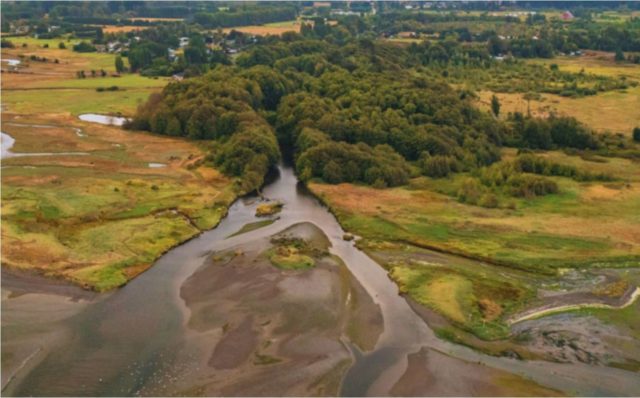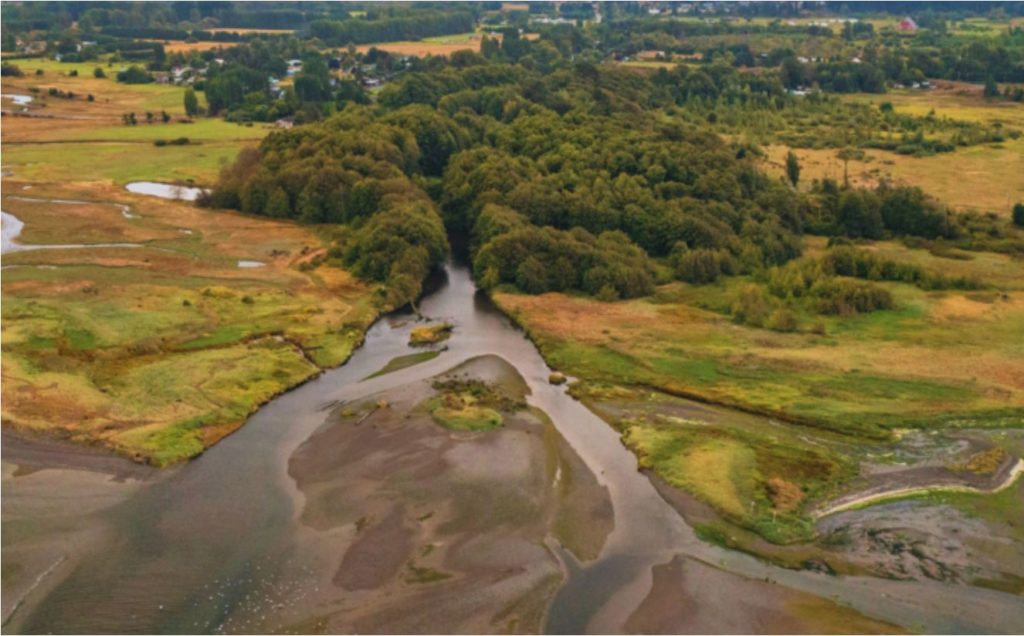
By Pepper Fisher
PORT ANGELES – This was not a good year for the Dungeness River in terms of the melting snowpack in the mountains that historically keeps the river flowing all summer. An exceptionally warm spring decimated that snowpack reservoir this year, leaving the river with extreme low flows.
But, thanks to a multi-agency effort led by the non-profit organization Washington Water Trust, working with the state Dept. of Ecology, the Jamestown S’Klallam Tribe, local landowners, and Amazon Web Services (yes, that Amazon), enough water was reserved in the river to support a massive migration of up to 400,000 pink salmon this summer.
How’d they do it? By not diverting much of the water that is usually taken up by farmers in the Dungeness Water Users Association who use water from the river to irrigate their land. That’s where Amazon comes in. Amazon uses a lot of water in the course of their daily operations. The company is committed to returning more water to Puget Sound-area communities than they use, through their Water Sustainability Program.
When Washington Water Trust Executive Director James Kraft contacted the company, he says they went all in.
“Amazon has a commitment to water sustainability, so they dropped everything, because this is a drought emergency. And the way it works is, from the middle of August to the middle of September, which is the end of the irrigation season, participating landowners, who otherwise would have the right to irrigate their fields, agreed voluntarily to basically turn down and leave that field fallow.”
In this case, Amazon paid a total of $125,000 to 18 landowners to not irrigate.
The effort was in response to Washington Governor Jay Inslee issuing an emergency drought declaration for twelve counties this summer, including Clallam. And because the Dungeness River is one of the most productive and critical salmon-bearing rivers in the Puget Sound region, supporting five species of salmon and Endangered Species Act-listed steelhead and bull trout, the need to something was dire.
The Washington State Department of Ecology also provided support by adding a second element to the project. Working with the Jamestown S’Klallam Tribe and the landowners, WWT coordinated four river diversion “pulse flows”, bursts of water that helped fish move upstream safely while they migrate. Kraft explained to us what a pulse flow is.
“It’s almost a misnomer. It’s really a base flow event. That is, instead of the base flow being diverted for irrigation, it’s being left in the river. The way the pulse flows work, is that for 13-hour periods on four separate days, during that month-long dry period, the irrigation districts left some of what they could have pulled out. So, there was another, you know, 10 or 20% of the river was being left in the river. It was like a signal to the fish that they could move.”
Learn more about the Washington Water Trust and their efforts to protect and restore rivers and stream at washingtonwatertrust.org.
(Above: James Kraft. Banner photo: Dungeness River delta. Photos courtesy of Washington Water Trust)

